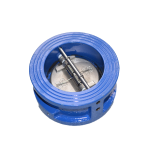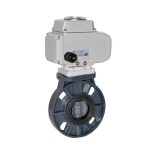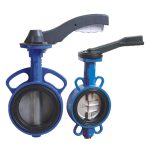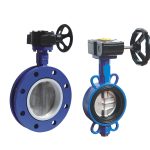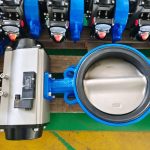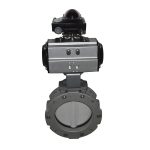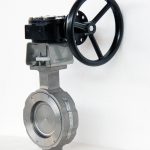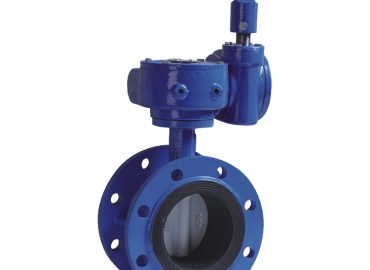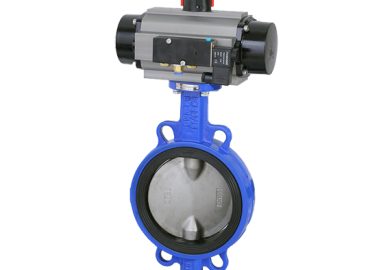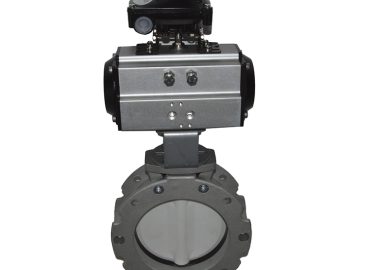Butterfly valves play a crucial role in fluid handling systems, providing precise control over the flow of liquids and gases. With their unique design and wide range of applications, it’s essential to understand the advantages and disadvantages of various types of butterfly valves to ensure optimal performance and efficiency. In this article, we will explore the key differences between wafer, lug, double flanged, and triple offset butterfly valves, delving into their specific benefits and drawbacks. By gaining a comprehensive understanding of these valve types, you can make informed decisions when selecting and implementing the ideal butterfly valve for your unique application requirements.
Introduction
Butterfly valve, known for their versatility and adaptability in fluid handling systems, offer a diverse range of options to suit various applications. Each type of butterfly valve presents its own set of advantages and disadvantages, making it essential to carefully consider the specific requirements of your system before making a selection. Wafer type butterfly valves are characterized by their compact and lightweight design, making them ideal for space-saving installations and low to medium pressure applications. However, their limited sealing capabilities may not be suitable for high-pressure environments. Lug type butterfly valves, on the other hand, provide better sealing performance and can be used as isolation valves, but their increased weight and installation space requirements may pose challenges. Double flanged butterfly valves are suitable for large-diameter pipelines and high-pressure applications due to their robust construction and excellent sealing capabilities. However, their bulky and heavy design necessitates more installation space and may be more expensive than other types. Lastly, triple offset butterfly valves offer exceptional sealing performance in high-temperature and corrosive environments, with minimal wear on sealing surfaces and reduced actuator size. Despite these advantages, their complex design and precise installation requirements contribute to higher costs and limited availability of parts and service providers. Ultimately, understanding the advantages and disadvantages of each butterfly valve type is crucial in determining the most suitable option for your specific application, ensuring optimal performance and reliability within your fluid handling system.
Brief overview of butterfly valves and their role in fluid handling systems
Butterfly valves are a critical component in fluid handling systems, designed to regulate and control the flow of liquids and gases within pipelines. These valves consist of a circular disc mounted on a rotating shaft, which when turned, either allows or restricts the passage of fluid through the pipeline. Butterfly valves are known for their simplicity, efficiency, and adaptability, making them a popular choice across various industries, including water and wastewater treatment, oil and gas, chemical processing, and HVAC systems. Their primary role in fluid handling systems is to maintain precise control over fluid flow rates, ensuring optimal process performance and safeguarding against potential issues such as leaks, pressure surges, or equipment damage. By offering a wide range of sizes, materials, and designs, butterfly valves cater to a diverse array of applications, providing reliable and efficient flow control solutions tailored to specific industry requirements.
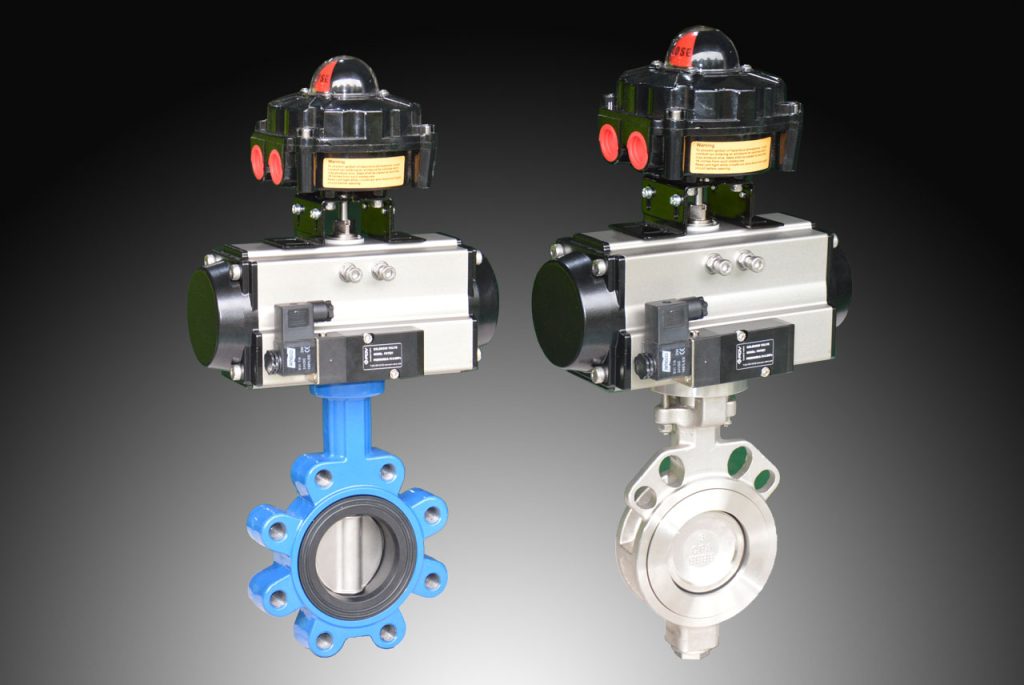
Importance of selecting the right type of butterfly valve for specific applications
Selecting the right type of butterfly valve for specific applications is crucial in ensuring the efficiency, reliability, and safety of fluid handling systems. The proper butterfly valve choice can lead to enhanced process control, reduced maintenance costs, and a longer service life for the entire system. Each type of butterfly valve possesses distinct characteristics, making them more suitable for certain applications than others. Factors such as pressure and temperature ratings, sealing performance, installation space, and materials compatibility must be taken into consideration when selecting the appropriate valve. By carefully evaluating these factors alongside the unique requirements of a particular application, system operators can make informed decisions that optimize the performance of their fluid handling processes. Choosing the right butterfly valve not only enhances the overall functionality of the system but also minimizes potential issues, such as leaks or equipment failure, ultimately contributing to a safer and more efficient operation.
Wafer Type Butterfly Valves
Wafer type butterfly valves are a widely used and versatile option in fluid handling systems, known for their compact and lightweight design. These valves are designed to fit between two flanges in a piping system, held in place by bolts that pass through the flanges and compress the valve body, creating a seal. This space-saving design makes wafer type butterfly valves an ideal choice for installations with limited room or where weight restrictions are a concern. Their simplicity and ease of installation contribute to their cost-effectiveness, making them an attractive option for budget-conscious projects. Wafer type butterfly valves are well-suited for low to medium pressure applications, providing reliable flow control in various industries, including water and wastewater treatment, chemical processing, and HVAC systems. However, they do possess some limitations, such as a restricted sealing capability compared to other valve types, which can make them unsuitable for high-pressure environments or critical isolation applications. Additionally, the lack of independent flanges in wafer type butterfly valves may create challenges when attempting to replace or service the valve without disrupting the entire piping system. Despite these drawbacks, wafer butterfly valve remain a popular and reliable choice for many fluid handling applications due to their compact design, affordability, and ease of installation.
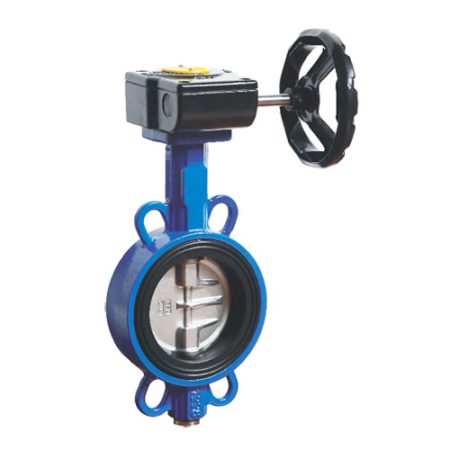
Advantages
Wafer type butterfly valves offer several advantages, making them a popular choice for many fluid handling applications. Their compact and lightweight design allows for space-saving installations, which is particularly beneficial in scenarios with limited room or where weight restrictions are a concern. This design also contributes to reduced installation costs, as wafer type butterfly valves typically require fewer materials and less labor than other valve types. Additionally, these valves are known for their simplicity and ease of operation, enabling quick and efficient flow control with minimal effort. Wafer type butterfly valves are suitable for a wide range of industries, including water and wastewater treatment, chemical processing, and HVAC systems, due to their adaptability and compatibility with various fluids and gases. Furthermore, they are available in various sizes, materials, and sealing options, ensuring that the appropriate valve can be selected to meet the specific requirements of any given application. Despite some limitations, such as restricted sealing capabilities in high-pressure environments, the numerous advantages of wafer type butterfly valves make them an attractive and reliable option for many fluid handling systems.
Disadvantages
While wafer type butterfly valves offer several advantages, they also come with certain disadvantages that must be considered when selecting the appropriate valve for a specific application. One of the key limitations of wafer type butterfly valves is their restricted sealing capability, which can make them unsuitable for high-pressure environments or critical isolation applications. This limitation may necessitate the use of other valve types, such as lug or double flanged butterfly valves, in cases where superior sealing performance is required. Additionally, the lack of independent flanges in wafer type butterfly valves may create challenges during maintenance or replacement, as the removal of the valve often requires the disassembly of the entire piping system. This can result in increased downtime and labor costs, potentially offsetting some of the initial cost savings associated with their simple design and installation. Furthermore, while wafer type butterfly valves are compatible with a wide range of fluids and gases, they may not be suitable for certain corrosive or abrasive media, which could lead to premature wear or damage. Despite these drawbacks, wafer type butterfly valves remain a popular choice for many fluid handling applications due to their compact design, affordability, and ease of installation.
Lug Type Butterfly Valves
Lug type butterfly valves are a robust and versatile option in fluid handling systems, designed to deliver reliable flow control and isolation capabilities across various industries. These valves feature lugs or protrusions on the outer edges of the valve body, which allow them to be mounted between two flanges using bolts that pass through the lugs and flanges, creating a secure connection. One of the key advantages of lug type butterfly valves is their ability to provide bidirectional flow control and support higher pressure applications compared to wafer type butterfly valves. This makes them suitable for more demanding environments, such as oil and gas processing, chemical plants, and power generation facilities. Additionally, lug type butterfly valves offer enhanced sealing performance, ensuring tight shut-off and improved isolation capabilities, which is particularly important in critical applications where leaks or cross-contamination must be avoided. Another significant benefit of lug type butterfly valves is their ease of maintenance and replacement. The independent flange connections enable the removal and servicing of the valve without the need to disassemble the entire piping system, saving time and reducing labor costs. Lug type butterfly valves are available in various sizes, materials, and designs, catering to the specific requirements of different applications and industries. Despite being slightly heavier and more expensive than wafer type butterfly valves, their superior performance, durability, and ease of maintenance make them a popular choice for many fluid handling systems.
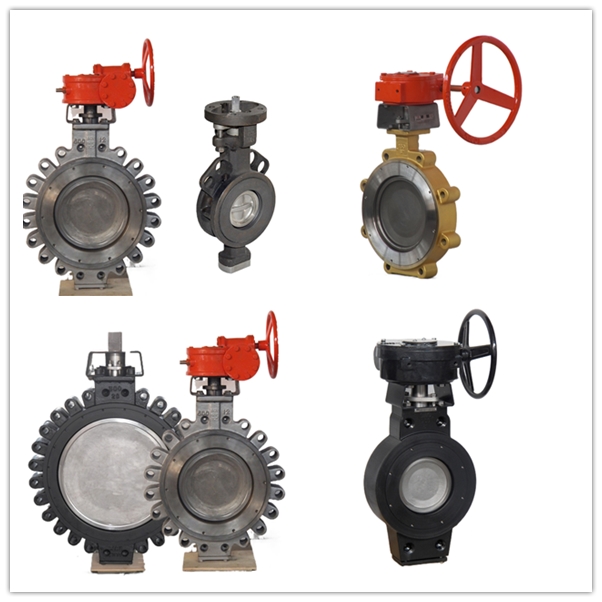
Advantages
Lug butterfly valve offer several advantages that make them a popular choice for various fluid handling applications. One of their primary benefits is the ability to provide bidirectional flow control and support higher pressure applications, making them suitable for more demanding environments such as oil and gas processing, chemical plants, and power generation facilities. Additionally, lug type butterfly valves deliver enhanced sealing performance, ensuring tight shut-off and improved isolation capabilities, which is crucial in critical applications where leaks or cross-contamination must be avoided. Another significant advantage of lug type butterfly valves is the ease of maintenance and replacement. Their independent flange connections allow for the removal and servicing of the valve without the need to disassemble the entire piping system, saving time and reducing labor costs. Furthermore, lug type butterfly valves are available in a wide range of sizes, materials, and designs, catering to the specific requirements of different applications and industries. Although they may be slightly heavier and more expensive than wafer type butterfly valves, their superior performance, durability, and ease of maintenance make lug type butterfly valves an attractive and reliable option for many fluid handling systems.
Disadvantages
Despite the numerous advantages of lug type butterfly valves, there are some disadvantages that should be considered when selecting the appropriate valve for a particular application. One notable drawback is their increased weight and size compared to wafer type butterfly valves, which may pose challenges in installations with space or weight constraints. Additionally, lug type butterfly valves tend to be more expensive than their wafer counterparts, primarily due to the added complexity of the lug design and the increased materials needed for construction. Furthermore, while lug type butterfly valves offer improved sealing performance, they may still not be suitable for certain high-pressure or extreme temperature applications where other valve types, such as gate or globe valves, could provide better performance. Lastly, it is essential to ensure proper alignment during installation, as misaligned flanges can lead to leakage or reduced sealing capabilities. In summary, while lug type butterfly valves offer several significant advantages, including bidirectional flow control, superior sealing performance, and ease of maintenance, their increased weight, size, and cost, as well as potential limitations in extreme operating conditions, should be carefully considered in the decision-making process.
Double Flanged Butterfly Valve types
Double flanged butterfly valves are a versatile and reliable option for fluid handling systems, providing efficient flow control and isolation capabilities across a wide range of industries. These valves feature two flanges that extend from the valve body, allowing them to be securely connected to the adjacent piping system using bolts and gaskets. One of the key advantages of double flanged butterfly valves is their ability to accommodate higher pressure applications and larger pipe sizes, making them suitable for more demanding environments such as water distribution networks, wastewater treatment plants, and industrial process systems. Additionally, double flanged butterfly valves offer superior sealing performance, ensuring tight shut-off and improved isolation capabilities, which is particularly important in critical applications where leaks or cross-contamination must be avoided. Double flanged butterfly valves are also known for their durability and long service life, thanks to their robust construction and the use of high-quality materials that can withstand corrosive or abrasive media. Furthermore, these valves are available in various designs, including concentric, double eccentric, and triple eccentric configurations, catering to the specific requirements of different applications and offering enhanced sealing and reduced wear in more challenging operating conditions. Another significant benefit of double flanged butterfly valves is the ease of installation, as they can be easily aligned and connected to the piping system without requiring additional support structures. While they may be slightly heavier and more expensive than wafer or lug type butterfly valves, their exceptional performance, durability, and adaptability make double flanged butterfly valves an ideal choice for many fluid handling systems, particularly those involving large diameter pipes or high-pressure applications.

Advantages
Double flanged butterfly valve boast several advantages that make them an ideal choice for a wide range of fluid handling applications. One key benefit is their ability to accommodate higher pressure applications and larger pipe sizes, making them suitable for demanding environments such as water distribution networks, wastewater treatment plants, and industrial process systems. Additionally, double flanged butterfly valves offer superior sealing performance, ensuring tight shut-off and improved isolation capabilities, which is crucial in critical applications where leaks or cross-contamination must be avoided. These valves are also known for their durability and long service life due to their robust construction and the use of high-quality materials that can withstand corrosive or abrasive media. Furthermore, double flanged butterfly valves are available in various designs, including concentric, double eccentric, and triple eccentric configurations, catering to the specific requirements of different applications and offering enhanced sealing and reduced wear in more challenging operating conditions. Another significant advantage is the ease of installation, as they can be easily aligned and connected to the piping system without requiring additional support structures. While they may be slightly heavier and more expensive than wafer or lug type butterfly valves, their exceptional performance, durability, and adaptability make double flanged butterfly valves a preferred choice for many fluid handling applications, particularly those involving large diameter pipes or high-pressure conditions.
Disadvantages
Despite the numerous advantages of double flanged butterfly valves, there are some disadvantages that must be considered when selecting the appropriate valve for a particular application. One notable drawback is their increased weight and size compared to wafer or lug type butterfly valves, which may pose challenges in installations with space or weight constraints and require additional support structures or handling equipment during installation. Additionally, double flanged butterfly valves tend to be more expensive than their wafer and lug counterparts, primarily due to the added complexity of the flange design and the increased materials needed for construction. Furthermore, while double flanged butterfly valves offer improved sealing performance, they may still not be suitable for specific high-pressure or extreme temperature applications where other valve types, such as gate or globe valves, could provide better performance. It is also essential to ensure proper alignment during installation, as misaligned flanges can lead to leakage or reduced sealing capabilities. In summary, while double flanged butterfly valves offer several significant advantages, including the ability to handle higher pressures, superior sealing performance, and durability, their increased weight, size, and cost, as well as potential limitations in extreme operating conditions, should be carefully considered in the decision-making process.
Triple Offset Butterfly Valve types
Triple offset butterfly valves, also known as triple eccentric butterfly valves, are a specialized type of butterfly valve designed to deliver exceptional sealing performance and durability in demanding fluid handling applications. These valves utilize three distinct offsets to achieve optimal sealing and reduced wear: the first offset is the shaft’s position relative to the center of the disc, the second offset is the shaft’s position relative to the centerline of the bore, and the third offset is the conical inclination of the sealing surface. The combination of these three offsets allows the valve disc to move in a unique cam-like motion, ensuring that the sealing surfaces only make contact during the final moments of closure, minimizing friction and wear between the disc and the seat.
One of the key advantages of triple offset butterfly valves is their ability to provide bubble-tight shut-off and improved isolation capabilities, making them suitable for critical applications where leaks or cross-contamination must be avoided, such as oil and gas processing, chemical plants, and power generation facilities. Furthermore, the reduced friction between the sealing surfaces significantly extends the valve’s service life and decreases the torque required for operation, resulting in lower maintenance costs and energy savings. Triple offset butterfly valves are also known for their versatility, as they can be used in a wide range of pressure and temperature conditions, including high-pressure and cryogenic applications.

Another notable benefit of triple offset butterfly valves is their compact design and lightweight construction compared to other valve types, such as gate or globe valves, which makes them easier to install and reduces the need for additional support structures. These valves are available in various sizes, materials, and designs, catering to the specific requirements of different applications and industries. While triple offset butterfly valves may be more expensive than concentric or double offset butterfly valves, their superior performance, durability, and adaptability make them a preferred choice for many demanding fluid handling systems, particularly those involving high-pressure or extreme temperature conditions.
Advantages
Triple offset butterfly valves offer several distinct advantages that make them a preferred choice for demanding fluid handling applications. One key benefit is their exceptional sealing performance, providing bubble-tight shut-off and improved isolation capabilities, making them suitable for critical applications where leaks or cross-contamination must be avoided, such as oil and gas processing, chemical plants, and power generation facilities. The unique cam-like motion of the valve disc, resulting from the three offsets, minimizes friction and wear between the sealing surfaces, significantly extending the valve’s service life and reducing the torque required for operation. This leads to lower maintenance costs and energy savings. Furthermore, triple offset butterfly valves are highly versatile, capable of handling a wide range of pressure and temperature conditions, including high-pressure and cryogenic applications. Their compact design and lightweight construction compared to other valve types, such as gate or globe valves, make them easier to install and reduce the need for additional support structures. Additionally, triple offset butterfly valves are available in various sizes, materials, and designs, catering to the specific requirements of different applications and industries. While they may be more expensive than concentric or double offset butterfly valves, their superior performance, durability, and adaptability make triple offset butterfly valves an attractive option for many demanding fluid handling systems, particularly those involving high-pressure or extreme temperature conditions.
Disadvantages
Despite the numerous advantages of triple offset butterfly valves, there are some disadvantages that should be considered when selecting the appropriate valve for a specific application. One notable drawback is their higher cost compared to concentric or double offset butterfly valves, primarily due to the added complexity of the triple offset design and the use of specialized materials for the sealing surfaces. This may make them less suitable for budget-conscious projects or applications where the enhanced sealing performance is not required. Additionally, triple offset butterfly valves may not be the best option for certain low-pressure applications, as their superior sealing capabilities could lead to increased torque requirements and operational difficulties under low-pressure conditions. Furthermore, the installation and maintenance of triple offset butterfly valves can be more complex than other butterfly valve types due to their unique design and the need for precise alignment of the sealing surfaces to ensure optimal performance. Lastly, while triple offset butterfly valves offer exceptional versatility, they may still not be suitable for some extreme temperature or pressure applications where other valve types, such as gate or globe valves, could provide better performance. In summary, while triple offset butterfly valves offer several significant advantages, including superior sealing performance, extended service life, and adaptability, their higher cost, potential limitations in low-pressure applications, and increased installation and maintenance complexity should be carefully considered in the decision-making process.
Conclusion
Butterfly valves are a popular choice for fluid handling systems due to their compact design, ease of operation, and cost-effectiveness. However, with various types of butterfly valves available, it’s essential to understand the advantages and disadvantages of each to make an informed decision when selecting the right valve for a specific application. In this blog post, we have discussed concentric, double flanged, and triple offset butterfly valves, highlighting their unique features, benefits, and drawbacks.
Concentric butterfly valves, also known as rubber-lined or resilient-seated butterfly valves, are the simplest and most cost-effective option. They are ideal for general-purpose applications where tight shut-off and moderate pressure handling capabilities are sufficient. However, they may not be suitable for high-pressure or extreme temperature applications, where sealing performance and durability are critical.
Double flanged butterfly valves offer several advantages, including the ability to handle higher pressures, superior sealing performance, and durability. They are suitable for more demanding environments such as water distribution networks, wastewater treatment plants, and industrial process systems. However, their increased weight, size, and cost, as well as potential limitations in extreme operating conditions, should be carefully considered during the selection process.
Triple offset butterfly valves provide exceptional sealing performance, extended service life, and adaptability, making them an attractive option for many demanding fluid handling systems, particularly those involving high-pressure or extreme temperature conditions. While they may be more expensive than concentric or double offset butterfly valves, their superior performance, durability, and adaptability often justify the higher investment.
Ultimately, the choice of butterfly valve will largely depend on the specific requirements and constraints of the application, including factors such as pressure and temperature ranges, sealing performance, size and weight limitations, and budget considerations. By carefully evaluating the advantages and disadvantages of each type of butterfly valve, engineers and decision-makers can select the most suitable valve to ensure optimal performance, reliability, and cost-effectiveness in their fluid handling systems.
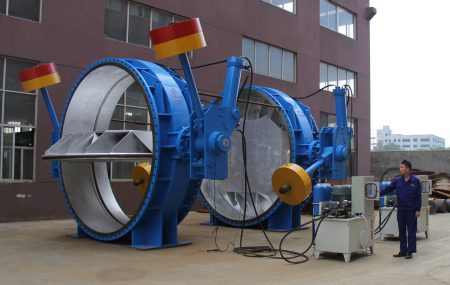
Recap of the various types of butterfly valves and their advantages and disadvantages
In summary, butterfly valves are versatile and efficient devices used in fluid handling systems, with each type offering unique advantages and disadvantages. Concentric butterfly valves are simple and cost-effective, ideal for general-purpose applications with moderate pressure requirements, but may not be suitable for high-pressure or extreme temperature conditions. Double flanged butterfly valves can handle higher pressures and offer superior sealing performance, making them suitable for more demanding environments; however, their increased weight, size, and cost should be considered. Triple offset butterfly valves provide exceptional sealing, extended service life, and adaptability, making them an attractive option for high-pressure or extreme temperature applications, but their higher cost and potential complexity in installation and maintenance must be taken into account. By carefully evaluating the specific requirements of an application, decision-makers can select the most appropriate butterfly valve type to ensure optimal performance, reliability, and cost-effectiveness in their fluid handling systems.
Importance of selecting the appropriate butterfly valve types based on specific application requirements
Selecting the appropriate butterfly valve based on specific application requirements is crucial to ensuring optimal performance, reliability, and cost-effectiveness in fluid handling systems. The choice of the right butterfly valve type depends on factors such as pressure and temperature ranges, sealing performance, size and weight limitations, and budget considerations. By carefully evaluating these factors, engineers and decision-makers can make informed choices that cater to the unique demands of their applications. Choosing the correct butterfly valve not only helps in achieving efficient system operation but also contributes to extended service life, reduced maintenance costs, and enhanced safety. In short, the importance of selecting the appropriate butterfly valve cannot be overstated, as it plays a vital role in optimizing the performance and longevity of fluid handling systems across various industries.
Recommendation to consult with experienced professionals when choosing and installing butterfly valve types for optimal performance and reliability
When choosing and installing butterfly valves for fluid handling systems, it is highly recommended to consult with experienced professionals to ensure optimal performance and reliability. These experts possess the necessary knowledge and expertise to guide decision-makers in selecting the most appropriate butterfly valve type based on specific application requirements, taking into account factors such as pressure and temperature ranges, sealing performance, size and weight limitations, and budget considerations. Furthermore, professional guidance can help avoid common pitfalls and mistakes during the installation process, ensuring proper alignment, sealing, and functionality of the valve. By collaborating with seasoned professionals, end-users can benefit from their insights, ultimately leading to enhanced system efficiency, extended service life, reduced maintenance costs, and improved safety. In essence, seeking the advice of experienced professionals is a crucial step in making well-informed decisions and maximizing the potential of butterfly valves within various fluid handling systems.



